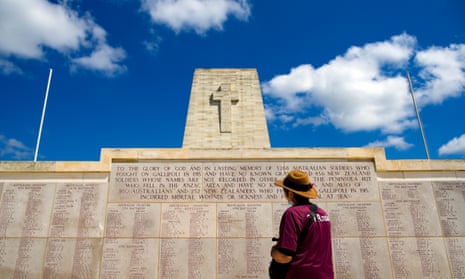
Commemoration – and what has increasingly become an almost ecclesiastic celebration of Australia’s short martial history – on Anzac Day relies on a bedrock of numbers and dates. Dates on which began the wars that killed Australian men and women – horribly on the battlefield, behind the lines, of wounds and disease or, less visibly, behind closed doors or in lonely continental corners by their own hands.
And then there are the dates on which such wars – entered without heed to the lessons of the previous ones and on the coattails of one of two empires – came to an end.
1914. 1918. 1939. 1945. 1950. 1953. 1962. 1973. 2001. 2021.
Then come the less comprehensible numbers of deaths of those on deployment in various conflicts and other operations.
61,678. 39,657. 340. 3. 16. 12. 22. 2. 523. 47. 4. 3.
Some of those numbers are recited at times of national commemoration such as today. It is hard to equate each single one – 1 – with a likely horrible, squalid individual violent death (which is what war always delivers). There are just too many 1s to recount the experiences of, to emotionally account for, to understand the killings and deaths of.
That is why nations weave grander, often more poetic, narratives around all of those 1s, to storify the end of their lives more collectively in war into some sort of relatable – and justifiable – context. For it is only through bigger stories of battlefield courage and endurance, spirit and mateship and loss (rarely “death’’), and of the sacrifice of the fallen (rarely the “dead’’) that we can rationalise what happened in the context of war – and authorise our politicians to do it again.
For every time our politicians commit personnel to conflict or to outlandish spending on military hardware, so that we will be further interoperable with the empires that dictate our defence strategy in readiness for the next war, they are implicitly professing that the human cost of the last one and the one before it was somehow worth it.
There are few certainties in war. But an old and very good adage – that Chesterfield-bound politicians and their tough-talking minions theorise endlessly about wars and then start them so that young people can die in them – rings very true.
It was perhaps illustrative that on the approach to this year’s Anzac Day a tough-talking former security-establishment bureaucrat spoke quaintly of Australia’s need to develop a comprehensive national war plan – a “book of war’’ to “focus the national mind’’. To which I thought the best antidote could well be the development of a “book of peace’’.
Ignore the jingoistic nationalism about Anzac having birthed the nation
But I’ve digressed a bit here. And so back to this day when politicians – who get to commit to the wars and send the personnel – also get to lead the commemorations for the war dead.
You’ll hear a lot about courage and the reasons why so many young people, here and the world over, have somehow become fodder for the war machine, as if by accident. You’ll hear even more about the Australian participation in the invasion of Gallipoli 109 years ago – though not of defeat or retreat there, or of the 8,000-plus soldiers who arguably died needlessly in that folly.
You’ll probably see the lines of football (AFL and NRL) blurred by some who’d equate battlefield courage with sporting field tenacity. But the truth is that football, whatever code you choose, is a far more apt metaphor for peace than it should ever be for war.
Enjoy the match amid the peace, ignore the jingoistic nationalism about Anzac having birthed the nation (contrary to the truth of millennia of Indigenous continental civilisation and the brutal ugliness of the frontier wars and massacres upon which the federation was actually built) and take a minute or two of quiet reflection to consider that every collective reference to the dead comprises a series of individuals. Of ones.
And then, perhaps, consider the others who die needlessly at home because, having served and suffered, the war machine then turns its back on them.
Here is a number you probably won’t hear referenced today: one serving or former Australian Defence Force member has a suicide-related contact with emergency services every four hours in Australia. This is according to new research conducted for the royal commission into defence and veteran suicide.
Perhaps the most disturbing element of this research is its exposure of the suicide-related contact of serving defence force members (almost six times that of the general civilian adult population) with police and paramedics.
Many of them die.
That is a tragically forgotten part of the human toll of war – of the Anzac “story”, if you like.
But it’s always been the case. And until we start thinking differently as a nation about war, nothing will change.
In Australia, the crisis support service Lifeline is 13 11 14. Children, young adults, parents and teachers can contact the Kids Helpline on 1800 55 1800. Help for Aboriginal and Torres Strait Islander people is available on 13YARN on 13 92 76.
Paul Daley is a Guardian Australia columnist


